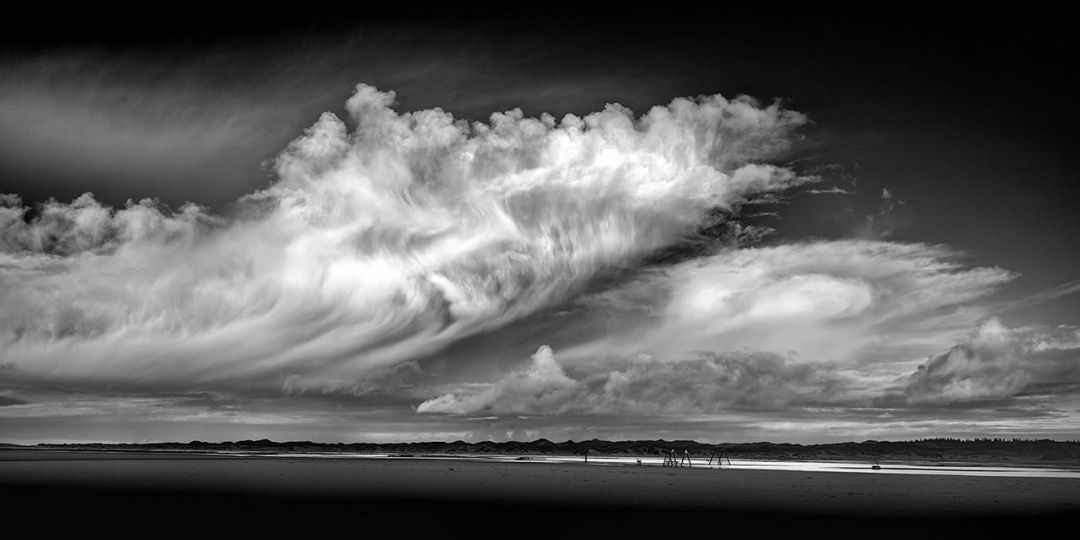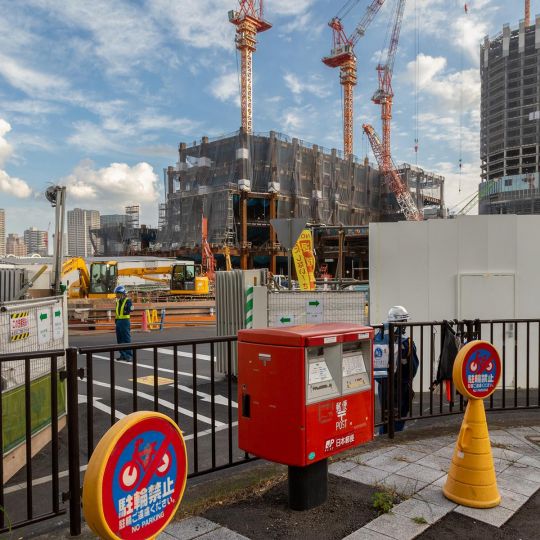The French general public knows CharlElie Couture primarily for his music, but his more knowledgeable fans are aware also that he was a painter before becoming a musician and that he is a graduate of the art school of the city of Nancy. A “complete” artist who seeks to build an artistic work on the scale of a life, CharlElie is not only a composer, performer, painter, drawer, sculptor, web designer and poet but often can be found where one least expects him. And, surprise, his first artistic passion, the one that in fact led him to music and to painting, is photography. His second photo book on New York, published by Editions du Chêne, will be out in bookstores on October 5.
He certainly started young! His mother gave him his first camera when he was seven. He quickly built his own laboratory and covered his bedroom walls with pages ripped out of the magazine Photo. He claimed for himself the title of official photographer at the age of fifteen when he realized that he could get into theater and jazz festivals for free. Unhappy that his photos were not being published, during intermissions he started to sell prints of pictures he’d taken at the beginning of the events. He even had a first photo exhibit which featured jazz artists. And he received a photographic award from the city of Nancy for an action shot of a child in the street. Most the money he earned from his first photo job was squandered by the purchase of a brand-new camera—camera which was stolen a few weeks later on the road in Italy. It took him a long time to forgive the Italians.
The young CharlElie—self-educated—was nonetheless extremely intimidated by professional photographers—he saw them as “monsters of technicality.” In high school, he went all out for physics-chemistry courses, conducting an extensive research project on the history of photography. During his art studies, he was already trying to combine photography and painting. At the time, as he admits himself, the results were not very successful.
This opposition or constant complementarity with painting is one of the unusual aspects of CharlElie’s photographic work. How to juxtapose the two arts? More attracted to and fascinated by Man Ray than Cartier-Bresson, what interests CharlElie is the transformation of reality through the camera lens. For a long time, he recopied and repainted the subject of his photos within more abstract paintings, like windows onto reality. It was only after he immigrated to New York in 2004 that he decided to glue the photograph directly onto the canvas or, inversely, to paint directly onto the photograph.
What’s more, he created a hybrid support entitled “Photo-graffs”: he added painted motifs onto large-scale prints of photos, mainly of New York, which gives one the impression of seeing the image through a window. He explains, “In my photo-graffs, the painting aims at rolling back the degree of consciousness of the photo.”
Like many before him, he credits the American metropolis for having freed him in his technique. “New York made me want to go further from one extreme to another, as much in the abstraction of the painting as in the surgical precision of the photograph.
When he left France, he left behind him his notoriety of musician. In that way, he was able to avoid pre-established opinions about himself and his work. “New York is a hard city but each person has the feeling about it of having come here to accomplish something, and this sometimes desperate enthusiasm brings a systematic positivism which gives one absolute confidence, “ he says. “There where a French person would be more likely to find out the opinion of the group before revealing his own thoughts, Americans are much more forthright for they all feel very free to express their individuality.” He concludes, “I never would have dared to do this work in France.
Having taken the definitive decision to fully live the New York experience, CharlElie exchanged his artist’s studio for a walk-in gallery from where he can see “the film of life” unfold before him. From his office, he observes and welcomes passers-by, tourists, workers, much as a bar owner might.
“I’m fascinated by the grid arrangement, this framework which defines New York and which unquestionably influences the state of mind of its population. Moving around the city is eminently efficient and functional, involving no loss of time.” These perpendicular and parallel lines which one finds in his urban photos are described by CharlElie as “life-lines.” He prefers to represent New York this way by photographing the paintings on the ground that mark this quest for organization and this city’s choice of existence, rather than by photographing people which is more a depiction of anecdotes.
After many years of success as a musician, CharlElie modestly built up his photographic work. “I have been lucky to have a two-faceted artistic life –the first being music where the performance often gives precedence to the artist over the work; the second being painting and photography where the artist remains in the background and often counts for much less than his work.” He quotes a painter friend Richard Texier who one day said to him with a certain envy, “As a musician, you have known what we painters never experience: applause.”
Regarding the impact of digital technology, CharlElie’s musical experience has enabled him to understand that Internet is both an incredible tool of transmission but also an extreme danger for authorial rights. However, he passionately defends the use of digital photography: “Photography is never technique. A good photograph of today uses the material of today to recount the images of today.”
Besides, he credits digital technology for the explosion of prices of original prints these past few years. “Faced by the flood of digital images, people no longer buy the substance, the subject of the photo, they tend rather to buy the form, in other words, the quality and the size of a print, the sensuality of the object itself and the exclusivity of the number of reproductions.” In some ways, digital technology has contributed to elevate the status of photography in the art market.
So, CharlElie, photographer? Finally, he concludes with modesty, “I see myself more as an artist using photography than a true photographer of the real.”
Inteview par Philippe Guelton
Publications
New York By CharlElie (Editions du Chêne, 2009)
New York Be CharlElie, Editions du Chêne, le 5 octobre 2011
Exhibitions
CharlElie
Galerie W, Rue Lepic à Paris du 7 octobre au 6 Novembre 2011
Chic Art Fair à Paris, du 21 au 24 Octobre 2011
Gallerie Naclil, 67 Rue St André à Lille du 20 Octobre au 3 Decembre 2011
Galerie CharlElie 362 West 36th Street, New York
















